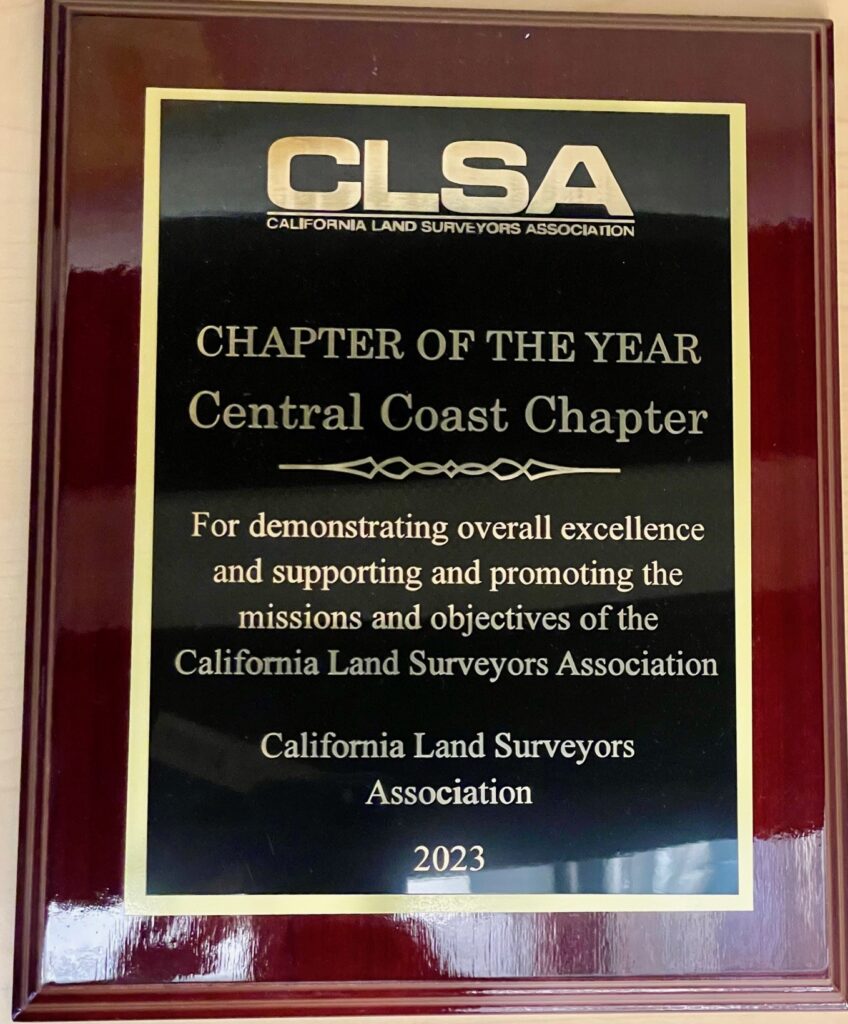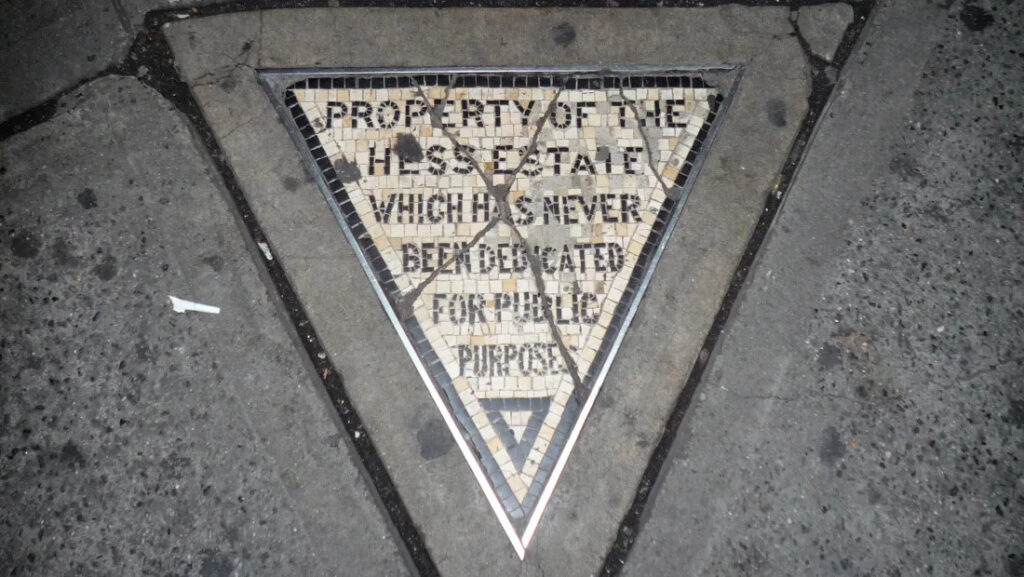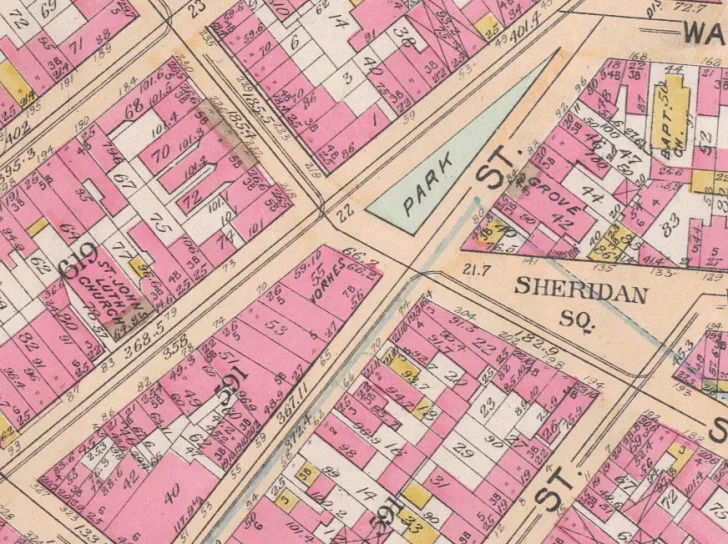The California Land Surveyors Association has recognized our very own Central Coast Chapter as the 2023 Chapter of the Year ! Congratulations to all !

Newsletter of the Central Coast Chapter of the California Land Surveyors Association

The California Land Surveyors Association has recognized our very own Central Coast Chapter as the 2023 Chapter of the Year ! Congratulations to all !

Please note that the date of the 2024 Summer BBQ has changed to September 7. Update your Calendar now !
September7September7September7September7September7September7September7

On an otherwise unremarkable stretch of sidewalk in New York City’s West Village, a tiny tile mosaic serves as David Hess’s century-old middle finger to City Hall. What was once the city’s tiniest piece of private property is the result of the angry collision of historic quirks in New York City’s street grid, turn-of-the-century city planning decisions, and intense grudge-holding. And you can still trespass on it today.
While most of New York City’s streets are laid out in a neatly ordered grid, Lower Manhattan—the oldest part of the city—is, cartographically speaking, kind of a mess. That’s because the city didn’t implement an official master plan for the layout of new streets until 1811, more than a century after the Dutch established a settlement at the southern tip of the island. The earliest-built parts of the city still maintain some of the quirks of a pre-plan settlement where property owners built their own streets with nearly no official oversight, resulting in a haphazard array of oddly shaped, variably sized blocks and narrow, crooked streets.
The bit of property now known as Hess’s triangle is located in this latter part of Manhattan, where the street grid is still a little wonky. It was even more so in the 1910s, when the city decided it needed to extend Seventh Avenue, a wide thoroughfare that was first built as part of that landmark 1811 master plan. In order to make room for traffic and for the construction of a new subway line, the city condemned an 11-block stretch of the West Village, demolishing hundreds of buildings starting in 1913. The extension was finished in 1916.

Because of the unique layout of the area, though, the new road didn’t cut through every block equally. Some property owners only lost only a corner of their buildings, while other structures were completely razed. Lots that were once full-sized became awkward triangles of property. Such was the case for Hess, who owned an apartment building called the Voorhis (or Voorhees, or Vorhes, depending on who you ask) that stood right in the middle of where the city wanted the road to run. Despite Hess’s best efforts to hold out, the city seized his property. Or, most of it. Though his building was demolished and the street built, the city’s surveyors accidentally missed a piece of it.
By 1922, Hess had already died, but his heirs weren’t about to give the city the land, no matter how useless it was. Instead, they laid down a mosaic of tiles inside the two-foot-wide triangle to serve as a reminder that it was private property, not just another stretch of sidewalk. It’s now known as Hess’s Triangle. The tiles read: “Property of the Hess estate which has never been dedicated for public purpose.”
The tiny plot—barely big enough for one person to stand on—is still there at 110 Seventh Avenue, sitting in front of what is now a cigar shop outside a subway entrance. You can even see it on Google Maps. It no longer belongs to the Hess estate, but it’s still private property—the Hess family sold it to the owner of the building next door in 1938.
Reprinted from getpocket.com
Minutes from the March 13, 2024 Chapter Meeting are now available here: 3.13.24 Minutes
In late January the CLSA Education Foundation released a list of the 2024 statewide scholarship recipients. Included in that list are the 3 winners of our Central Coast Chapter scholarships:
Cliff Lewis Memorial Scholarship: Michael Fink, Fresno State
Jeremy Redmond Memorial Scholarship: John Canby, College of the Canyons (Santa Clarita Valley)
Central Coast Chapter Scholarship: Kaitlin Rowley, Fresno State
for the complete list from CLSA click here